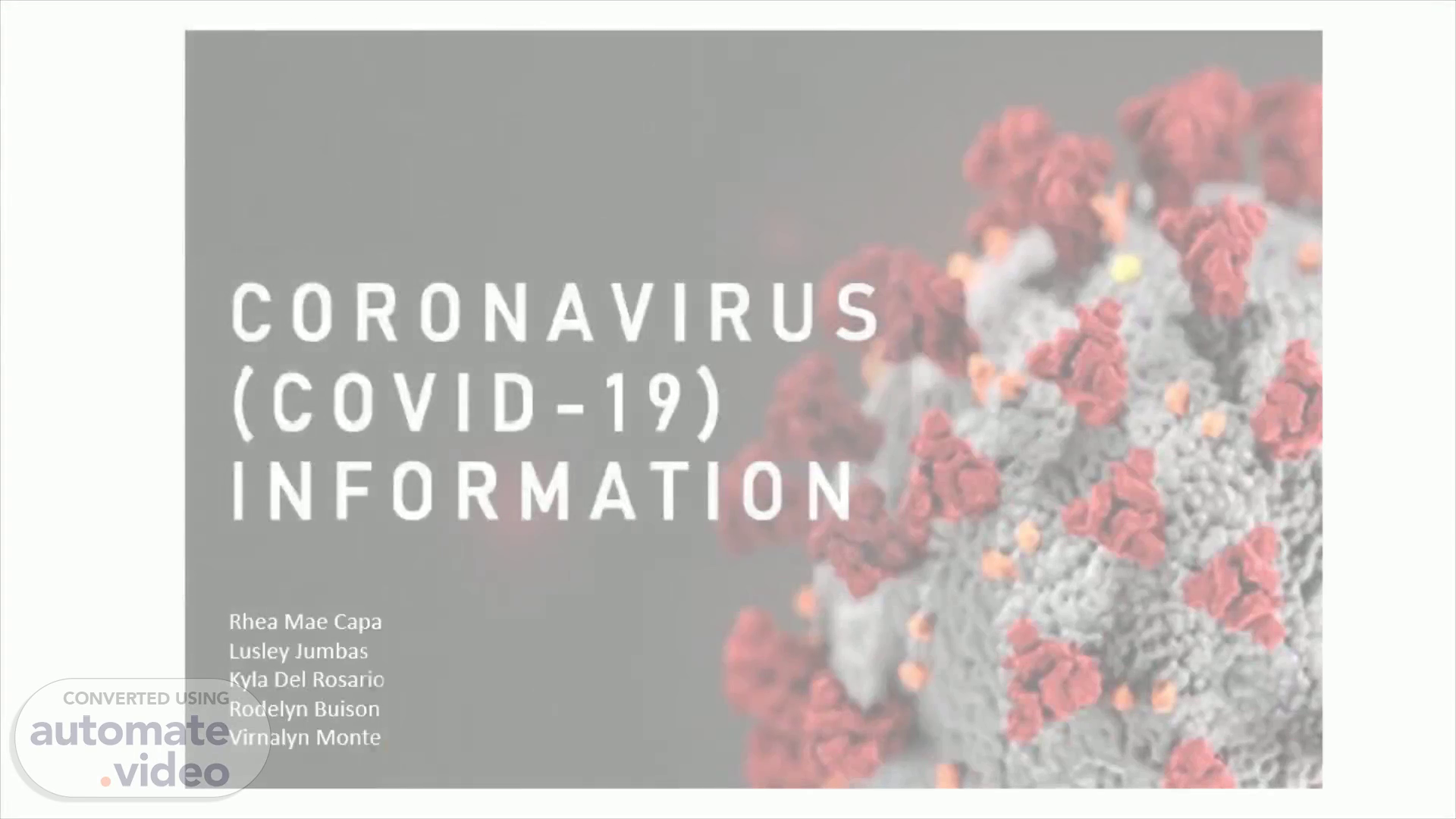
PowerPoint Presentation
Scene 1 (0s)
Ενημέρωση για COVID-19 Β.Ε.Π. Rhea Mae Capanas Lusley Jumbas Kyla Del Rosario Rodelyn Buison Virnalyn Montenegro Femari Janua Palang -at Hezel Ann Superales Erlyn Dolorso Riccine Illustrisimo Loisa Mae Lirazan John Serna Ytienza Earl Joshua Vergara TJ Tubongbanua JM Panes.
Scene 2 (10s)
[Audio] What is Corona Virus? Coronavirus disease ( COVID- 19) is an infectious disease caused by the SARS-CoV- 2 virus. Most people infected with the virus will experience mild to moderate respiratory illness and recover without requiring special treatment. However, some will become seriously ill and require medical attention. Older people and those with underlying medical conditions like cardiovascular disease, diabetes, chronic respiratory disease, or cancer are more likely to develop serious illness. Anyone can get sick with COVID-19 and become seriously ill or die at any age..
Scene 3 (40s)
[Audio] The new decade of the 21st century ( 2020) started with a deadly coronavirus disease 2019 ( COVID- 19) pandemic caused by a novel coronavirus ( SARS-CoV- 2) in Wuhan, China.
Scene 4 (55s)
[Audio] There are 2 modes of transmission of COVID- 19 direct and indirect. The direct mode includes transmission via aerosols formed via surgical and dental procedures and/or in the form of respiratory droplet nuclei. The other one is other body fluids and secretions, for example, feces, saliva, and cough. Indirect transmission may occur via fomites or surfaces ( e.g., furniture and fixtures) present within the immediate environment of an infected patient and the other one is objects used on the infected person (e.g., stethoscope or thermometer)..
Scene 5 (1m 25s)
[Audio] FACE MASKS To reduce COVID- 19 transmission from potentially asymptomatic or presymptomatic people, the ECDC recommends the use of face mask. Wearing a face mask could be considered, especially when visiting busy, closed spaces, such as grocery stores, shopping centres, etc.; when using public transport; and for certain workplaces and professions that involve physical proximity to many other people (such as members of the police force, cashiers – if not behind a glass partition, etc.) and when teleworking is not possible..
Scene 6 (1m 55s)
[Audio] Social distancing is designed to reduce interactions between people in a broader community, in which individuals may be infectious but have not yet been identified hence not yet isolated. As diseases transmitted by respiratory droplets require a certain proximity of people, social distancing of persons will reduce transmission. Social distancing is particularly useful in settings where community transmission is believed to have occurred, but where the linkages between cases is unclear, and where restrictions placed only on persons known to have been exposed is considered insufficient to prevent further transmission..
Scene 7 (2m 22s)
[Audio] Quarantine is one of the oldest and most effective tools of controlling communicable disease outbreaks. This public health practice was used widely in fourteenth century Italy, when ships arriving at the Venice port from plague-infected ports had to anchor and wait for 40 days (in Italian: quaranta for 40) before disembarking their surviving passengers. The quarantine of persons is the restriction of activities of or the separation of persons who are not ill but who may been exposed to an infectious agent or disease, with the objective of monitoring their symptoms and ensuring the early detection of cases. Quarantine is different from isolation, which is the separation of ill or infected persons from others to prevent the spread of infection or contamination.